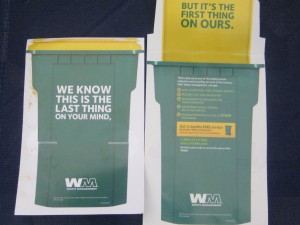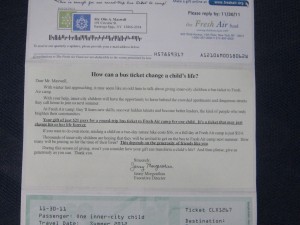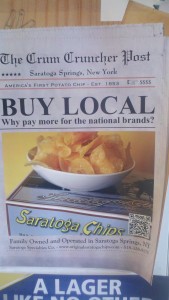The first paragraph is the most important element of any selling message. If you don’t hook your reader here they will abandon you. (Which is why it’s not a good idea to keep key selling points in reserve, thinking you will reveal them if you go along.) Just like the subject line or outer envelope teaser, these words are worth the investment of a disproportionate amount of your time.
It’s never wrong to open with a strong statement of your offer (I want to let you know about an unusual sale on first quality goods that don’t normally get discounted, but are now 50% off for a limited time) or an explanation why you are writing (because I believe you are among the top 5% of salespeople, I want to share an opportunity that most people would not even understand). But that’s not good enough.
You ALSO need to provide verbal chum for the slow-moving fish who initially are not attracted by your offer, or do not think it applies to them, but can be lured into the net with the right conversational gambit. Let’s talk about a few ways to do this.
Problem/solution open: works with many technology products because technology consumers nearly always have some problem to solve. If you’re looking to maximize the potential of the XYZ platform, then you’ll want to read a new collection of case histories from industry leaders who have done just that.
Picture yourself here: paint an evocative word image of the benefits to be gained as a result of the offer in the letter, tied to the reader personally. My control letter for Online Trading Academy, which educates people to trade stocks and other investments online, does this: “Imagine, for a moment, what investing would be like if you knew you could not fail. Never again would you sell a winning position too soon—or hold onto a loser for longer than you should…”
Flattery: you are writing the recipient precisely because they are a perceptive member of your target audience, and they can justify your confidence in them by acting appropriately. Nice if you can pull it off. The variations on Emily Soell’s classic intro for Vanity Fair belong in this category: “Dear Friend, If the list on which I found your name is any indication, this is not the first – nor will it be the last – subscription letter you receive… [goes on to explain it is a very special list of perceptive readers].”
News: this is the default opening in fundraising and politics, where there is generally an urgent need that your reader is enlisted in helping to relieve. May also work for business to business or personal-interest consumer marketing IF you are confident from your audience research that the reader will be as excited about the news as you are.
Emotion: My control letter for Met Life’s long term care insurance prospecting starts with a paragraph I jotted down in a meeting with the sales team: “Every one of us would like to live well in our later years and leave some money for the next generation. Is that too much to ask?” It fits the combination of fear for the future and indignation at the status quo that the reader is feeling. As with the news approach, this only works if you have a true mind meld with your reader.
Entertainment/escape: Many of the most successful publications promotions start with a “free sample” of the content. People will subscribe to be inspired or entertained or to be lifted out of their quotidian existence, so why not start right now? The Great American Recipes letter does this: “Remember when good food meant the best times you ever had with family and friends? I’m talking about lazy summer evenings serving home-made ice cream on the screen porch….”
An opener that does several of these things simultaneously is the introduction of my four page letter for Geneva, a M&A consultant whose business model was to invite business owners to a two-day paid (not free) workshop on how to value their business:
We’re in the midst of the hottest Mergers & Acquisition market in 100 years and you, as the owner of a middle-market business, have the most desirable property of them all… That’s why, like many of the people who attend our Business Valuation Seminar, you may have already received an offer—and for more than you ever dreamed your business could be worth. And even if you haven’t yet been approached about selling, you probably will be soon.
News, flattery, a bit of picture-yourself-here sets the reader up nicely for the presentation of my client’s seminar as the solution to the problem.
One final tip, after you’ve completed your best effort at an opening paragraph, take it out. That’s what I said. Editors often advise writers to cut the first paragraph of their work because it’s an unnecessary wind-up before the real pitch and the same may be true of your letter. If your copy falls flat with the first paragraph removed, then you know you have a winner for an opening.
This article mentions several examples which can be found in my new book, Copywriting that Gets RESULTS! Get your copy here.


